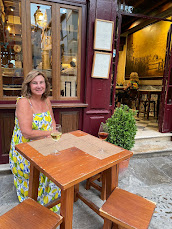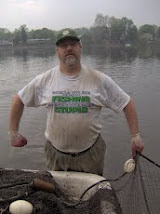TRAVEL WITHOUT CONTEXT
Given the opportunity to
see this world, one should seize it with both hands. Never let it slip away. You
may not have another chance to return to your destination. Once there make sure
you relish where you’ve alighted; savor its sights and sounds and smells and
flavors, her people and their customs. Sit quietly and take it all in and
realize how lucky you are, how adventurous you are to want to look beyond your
picket fence.
It's a big world out
there and there is a lot to see. Readers of this blog already know my take on
this. “LIVE TRAVEL LOVE” isn’t simply a motto, but a way of life.
You must travel
correctly though; no mad dash helter-skelter “If It’s Tuesday This Must Be
Belgium” shenanigans. That is travel without context. That is collecting
pictures.
That was how we planned
our recent trip to Seville. We spent nearly our entire week in Seville and had
plenty of opportunity to linger and enjoy, but against our principles we did
take two single day trips in the middle of it. One day we took a train to
Cordoba and the next day we rented a car and drove to Ronda.
We did “see” these
Andalusian cities, each a worthwhile visit, but both days felt rushed.
Cordoba
Train schedules had us
in Cordoba for less than 8 hours and after our private tour with Isabel Martinez
Richter (+34 669 645, isabmr@gmail.com) through the Jewish
Quarter and the magnificent Mosque-Cathedral it was a brisk walk back to the station
to catch our reserved seat on the return train.
 |
| La Casa Andalusí |
Patios
are a little oasis meant to offer respite from the Andalusian sun and the
people of Cordoba take great pride in their slice of paradise. In fact, there
is a fierce competition held in May as patio owners vie for the being selected
as the most picturesque patio. Decorated with plants and fountains, these quiet
places are open to tourists, and some are free. Click the link below to get a
list.
We
visited La Casa Andalusí on Calle Judíos, 12, right next to the synagogue.
Enthusiastic, knowledgeable
and witty, Isabel walked us all through the quarter and pointed out several other
patios and then we toured the majestic Mosque-Cathedral.
Rather than tearing
down the mosque when Cordoba was captured during the “Reconquista” a Cathedral
was erected in the middle of it, perhaps saying to the Moors that Christianity
is more powerful. The arches of the mosque suddenly give way to a resplendent cathedral.
It’s a striking juxtaposition. Isabel also pointed out stonemason marks on many
of the pillars of the mosque, as a type of signature for their work.
The whole visit was
fascinating, but sadly our quick trip to Cordoba left me wanting more.
Ronda
The next day the 124 km
drive through Andalusia to Ronda was wonderful, but not wanting to drive at
night our time was limited in the cliffside town. Diversions, albeit minor, were
almost impossible if we wanted to spend any time in Ronda. We did manage to
stop at Oleum Viride, to buy olive oil, and somehow survived the steep narrow
streets of Zahara de la Sierra before reaching Ronda.
Zahara is one of the Pueblos
Blancos or White Villages of Andalusia. I’m glad we did it, but we basically held
our breath and drove through the impossibly narrow and steep streets of this historic
town.
 |
| Zahara de la Sierra |
Long ago in another lifetime I had been to Ronda with my young children and this town had made a lasting impression and I wanted to return.
During that first visit
my children tussled in the Real Maestranza de Caballeria de Ronda bullring, the
oldest and the birthplace of modern bullfighting. My daughter repeatedly pirouetted
with her jacket as my son lunged at her with fingers as horns, to the applause
from people in the stands, before finally bashing her younger brother to the
sandy pitch.
 |
| Bullring, Ronda |
I wanted to see the
bullring again. I wanted to gape again like all the other countless tourists at
El Tajo, the ravine 300 feet deep and 200 feet wide, that is Ronda’s main
attraction and feel the great, unsettling expanse of air. And, I wanted to have
a drink at the city’s parador, Ronda’s former town hall, that somehow clings to
the very edge of the cliff.
We did not take a tour,
but we did all three! We also had a great late lunch at Meson el Sacristan
located in the older section of town. The parador and bullring are across the
bridge in the newer section of Ronda.
 |
| Parador, Ronda |
Meson el Sacristan
specializes in grilled meats, and we ordered a lot of tapas, but had to limit
our drinking because of the drive home.
Both days we were rushed, but we managed to see and experience a lot. We did not try to do too much. Having a tour in Cordoba and context in Ronda was very helpful.
Now, if you're wondering about the "If It's Tuesday, This Must Be Belgium" reference at the beginning of this blog entry, it is to a 1969 film about a bunch of Americans on an 18 day, 9 country tour of Europe. Other than the reference to frenetic traveling the largely forgettable film starred this shy scribe's first heartthrob, Suzanne Pleshette, and the original Mr. Roper in the television show Three's Company, Norman Fell.
If you're so inclined here's the film on YouTube.
 |
| Ronda 2023 |
 |
| Mosque-Cathedral Cordoba |
 |
| Mosque-Cathedral, Cordoba |
 |
| Stonemason mark Mosque-Cathedral, Cordoba Ama siempre! Janet and greg © 2023 by Gregory Dunaj |






















































